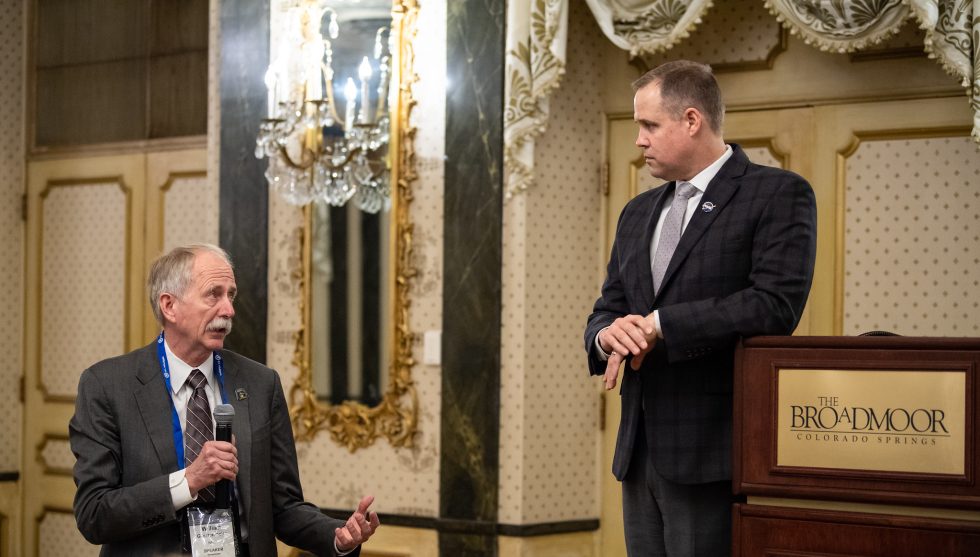A little more than three weeks have passed since Vice President Mike Pence tasked NASA administrator Jim Bridenstine with returning humans to the Moon by 2024. Since then, the Oklahoman has been hotfooting around the country to build support—testifying before Congress, huddling with White House budget officials, speaking at major space conferences, and, this past weekend, visiting his alma mater, Rice University.
During the visit to Houston Saturday, Ars met with Bridenstine to talk about these efforts. We discussed his biggest concern at present, which is building political momentum to fund the plan. This involves developing an amendment to President Trump's Budget Request for fiscal year 2020, that will seek additional funding for the accelerated Moon program. Realistically, Bridenstine said, this amendment will be ready "by the end of the month."
This is a critical document, as the White House will only really have one chance to get this request right if NASA is to have a realistic chance of making the 2024 goal. To begin funding lunar lander development, design new spacesuits, and make related plans, this new funding must arrive at the start of the fiscal year on October 1, and Bridenstine realizes this will only happen with a broad political consensus.
Here is some of our conversation, lightly edited for clarity:
Q. Why should we have confidence that a goal like 2024 is realistic? NASA was saying only last month that it could not do this before 2028.
A. I would say, technologically, it's realistic. It's not easy. There's a lot of schedule risk, programmatic risk, and technical risk. And so it's not easy, but it's doable. I think the bigger risk, that has to be retired earlier, is the political risk. How do we get the money? And so we have to make sure that, as much as possible, we're driving bipartisan, apolitical decisions and processes into the matrix. You've probably heard me talk about this before, but we can't cannibalize one part of the agency to feed another part of the agency. We can't cut the Science Mission Directorate to feed human exploration. We can't cannibalize the International Space Station to feed the Moon mission. So if we go in those directions, which have all been tried in the past, it never works politically. We can't do the same thing again and be upset that it didn't work. So we actually have to try something different. We have to consider another way of funding this. We're working with the Office of Management and Budget and the National Space Council to come up with different alternatives to get the resources necessary to achieve it.
Q. I'm less concerned about the Office of Management and Budget than I am about Democrats in Congress. Dating back to Walter Mondale, some Democrats in Congress have generally opposed large space projects, arguing that money could be better spent on domestic problems. Some have already raised questions about this being a Trump vanity project.
A. From my experience as the NASA administrator, I have found strong bipartisan support for what NASA is doing. We have seen that even with the omnibus spending package that was passed a few months ago; we saw it with the omnibus before that. The president's budget request always intends to increase the NASA budget, and even before we can advocate for that, Congress has already plused us up to a higher number. We have seen this strong bipartisan support. In order to achieve the 2024 Moon landing, we're going to need a bigger budget. And that absolutely has to go through a bipartisan process in Congress. What I have found is that it's not just partisan. It's parochial. We have 10 centers across the nation. If one of those centers, if a Senator or a Congressman feels like their center is not getting a fair share, then they oppose what we're trying to achieve. So we have to look at this holistically. The vice president said very clearly to achieve the first woman on the Moon, in 2024, by any means necessary. And 'any means necessary' means building a coalition of support that would include bipartisanship. That's what we intend to start working on right away. In fact, we're putting together the budget amendment to send to Congress. If it is not a bipartisan budget request, it will be dead on arrival. We all know that.
Part of the "bipartisan" approach will involve using both the Space Launch System rocket and Orion spacecraft, as well as private rockets. Ideally, Bridenstine said, the build-up to the Moon will involve three flights of the SLS rocket. The first one, in 2020, will fly an uncrewed Orion spacecraft around the Moon; the second, in 2022, will fly a crewed mission around the Moon; the third, in 2024, will carry a crew to lunar orbit, inside Orion, to set up a landing.
In the meantime, using private rockets, NASA will construct a small "Gateway" near the Moon. To accomplish this, NASA will fly a "power and propulsion" element to cislunar space and later a small "habit module" to form the "early" Lunar Gateway. NASA also needs to pre-position the lunar lander at the Gateway 2024, and this lander may be delivered to the Gateway by commercial rockets, too.
This lander could comprise three parts: a "transfer" vehicle (to get from the Gateway's orbit to low lunar orbit); a "descent" module to carry the crew down to the surface; and an "ascent" vehicle to get them back up from the surface to the waiting transfer vehicle, which would fly the crew back to the Gateway. From there, the astronauts would return home in the Orion spacecraft.


Ars Technica
[contfnewc] [contfnewc]







